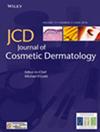Anthropometric and Angular Measurements in Healthy Persian Females in Comparison to the Golden Ratio
Abstract
Introduction
Anthropology is the scientific exploration of the human body morphology. The present study aims to establish the anthropometric norms among young Persian ethnic women and compare them with golden proportion, a mathematical formula in facial esthetics.
Methods
This cross-sectional study was performed on Persian women between July 2020 and January 2021. Persian women were randomly selected based on the inclusion criteria of the study. Two standard photos were taken of each participant in profile and frontal angle, and then the anthropometric ratios were extracted and compared in different groups.
Results
Two hundred twenty-five Persian women aged 20–50 years with an average age of 32.4 ± 7.09 were included. The golden ratio in Fars ethnicity was 1.79 ± 0.24. Forehead height I significantly increased with age (p value = 0.03). Philtrum length also showed a significant age-related increase (p value = 0.001). Lower and upper lip heights increased with age (p value = 0.002). Our results revealed statistically significant differences in the mean labial fissure width among the three age groups (p value = 0.009). Lower vermilion height significantly decreased with increasing age (p value = 0.028). The mentolabial and nasal dorsum angles exhibited significant differences among the age groups (p value = 0.002). Furthermore, the jaw and chin angles were notably lower in the younger age groups (p value = 0.047 and 0.001, respectively). When comparing different ethnicities, the Turk ethnicity stood out as having a significantly higher chin angle.
Conclusion
In conclusion, the present study challenges the universality of the golden ratio, with Persian females demonstrating a closer adherence to a ratio of 1.75 and recommending a modified golden ratio for Middle Eastern. Our findings also highlight the importance of considering age-related changes in cosmetic interventions, particularly lip and forehead dimensions.


 求助内容:
求助内容: 应助结果提醒方式:
应助结果提醒方式:


